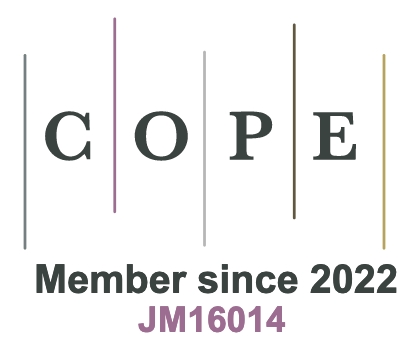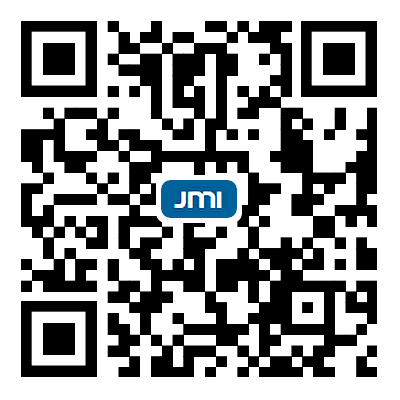REFERENCES
1. Cao Y., Sheng Y., Li X., Xi L., Yang J. Application of materials genome methods in thermoelectrics. Front. Mater. 2022;9:861817.
2. Wan X., Feng W., Wang Y., et al. Materials discovery and properties prediction in thermal transport via materials informatics: a mini review. Nano Lett. 2019;19:3387-95.
3. Wang T., Zhang C., Snoussi H., Zhang G. Machine learning approaches for thermoelectric materials research. Adv. Funct. Mater. 2020;30:1906041.
4. Zhang Z., Jiang Y., Shu M., Li L., Dong Z., Xu J. Artificial photosynthesis over metal halide perovskites: achievements, challenges, and prospects. J. Phys. Chem. Lett. 2021;12:5864-70.
5. Yang J., Xi L., Qiu W., et al. On the tuning of electrical and thermal transport in thermoelectrics: an integrated theory–experiment perspective. NPJ Comput. Mater. 2016;2:15015.
6. Uchida K., Takahashi S., Harii K., et al. Observation of the spin Seebeck effect. Nature. 2008;455:778-81.
9. Crane D. T., Jackson G. S. Optimization of cross flow heat exchangers for thermoelectric waste heat recovery. Energy Convers. Manag. 2004;45:1565-82.
10. Qin Y., Qin B., Wang D., Chang C., Zhao L. D. Solid-state cooling: thermoelectrics. Energy Environ. Sci. 2022;15:4527-41.
11. Chen W. Y., Shi X. L., Zou J., Chen Z. G. Thermoelectric coolers for on-chip thermal management: materials, design, and optimization. Mater. Sci. Eng. R. Rep. 2022;151:100700.
12. Yang J. Potential applications of thermoelectric waste heat recovery in the automotive industry. In ICT 2005. 24th International Conference on Thermoelectrics, 2005, Clemson, USA. Jun 19-23, 2005. IEEE; 2005. pp. 170–4.
13. Xie H., Zhang Y., Gao P. Thermoelectric-powered sensors for Internet of Things. Micromachines. 2022;14:31.
14. Bonin R., Boero D., Chiaberge M., Tonoli A. Design and characterization of small thermoelectric generators for environmental monitoring devices. Energy Convers. Manag. 2013;73:340-9.
15. Date A., Date A., Dixon C., Akbarzadeh A. Progress of thermoelectric power generation systems: prospect for small to medium scale power generation. Renew. Sustain. Energy Rev. 2014;33:371-81.
16. He R., Schierning G., Nielsch K. Thermoelectric devices: a review of devices, architectures, and contact optimization. Adv. Mater. Technol. 2018;3:1700256.
17. Zhang Q., Deng K., Wilkens L., Reith H., Nielsch K. Micro-thermoelectric devices. Nat. Electron. 2022;5:333-47.
18. Zhang Q. H., Huang X. Y., Bai S. Q., Shi X., Uher C., Chen L. D. Thermoelectric devices for power generation: recent progress and future challenges. Adv. Eng. Mater. 2016;18:194-213.
19. Sajid M., Hassan I., Rahman A. An overview of cooling of thermoelectric devices. Renew. Sustain. Energy Rev. 2017;78:15-22.
20. Belsky A. A., Glukhanich D. Y. Standalone power system with photovoltaic and thermoelectric installations for power supply of remote monitoring and control stations for oil pipelines. Renew. Energy Focus. 2023;47:100493.
21. Palaporn D., Tanusilp S., Sun Y., Pinitsoontorn S., Kurosaki K. Thermoelectric materials for space explorations. Mater. Adv. 2024;5:5351-64.
22. Venkatasubramanian R., Siivola E., Colpitts T., O'Quinn B. Thin-film thermoelectric devices with high room-temperature figures of merit. Nature. 2001;413:597-602.
23. Yang S., Qiu P., Chen L., Shi X. Recent developments in flexible thermoelectric devices. Small Sci. 2021;1:2100005.
24. Snyder G. J., Snyder A. H. Figure of merit ZT of a thermoelectric device defined from materials properties. Energy Environ. Sci. 2017;10:2280-3.
25. Kim H. S., Gibbs Z. M., Tang Y., Wang H., Snyder G. J. Characterization of Lorenz number with Seebeck coefficient measurement. APL Mater. 2015;3:041506.
26. Martin J., Tritt T., Uher C. High temperature Seebeck coefficient metrology. J. Appl. Phys. 2010;108:121101.
27. de Boor J., Müller E. Data analysis for Seebeck coefficient measurements. Rev. Sci. Instrum. 2013;84:065102.
28. Snyder G. J., Pereyra A., Gurunathan R. Effective mass from Seebeck coefficient. Adv. Funct. Mater. 2022;32:2112772.
29. Iwanaga S., Toberer E. S., LaLonde A., Snyder G. J. A high temperature apparatus for measurement of the Seebeck coefficient. Rev. Sci. Instrum. 2011;82:063905.
30. Mott N. F. The electrical conductivity of transition metals. Proc. R. Soc. Lond. A. 1936;153:699-717.
31. Radzuan N. A. M., Sulong A. B., Sahari J. A review of electrical conductivity models for conductive polymer composite. Int. J. Hydrogen Energy. 2017;42:9262-73.
32. Ebbesen T. W., Lezec H. J., Hiura H., Bennett J. W., Ghaemi H. F., Thio T. Electrical conductivity of individual carbon nanotubes. Nature. 1996;382:54-6.
35. Venkatasubramanian R. Lattice thermal conductivity reduction and phonon localizationlike behavior in superlattice structures. Phys. Rev. B. 2000;61:3091.
36. Zapata-Arteaga O., Perevedentsev A., Marina S., Martin J., Reparaz J. S., Campoy-Quiles M. Reduction of the lattice thermal conductivity of polymer semiconductors by molecular doping. ACS Energy Lett. 2020;5:2972-8.
37. Murakami T., Shiga T., Hori T., Esfarjani K., Shiomi J. Importance of local force fields on lattice thermal conductivity reduction in PbTe1-xSex alloys. EPL. 2013;102:46002.
38. Wan C., Wang Y., Wang N., Norimatsu W., Kusunoki M., Koumoto K. Development of novel thermoelectric materials by reduction of lattice thermal conductivity. Sci. Technol. Adv. Mater. 2010;11:044306.
39. Kim T. Y., Park C. H., Marzari N. The electronic thermal conductivity of graphene. Nano Lett. 2016;16:2439-43.
40. Graf M. J., Yip S. K., Sauls J. A., Rainer D. Electronic thermal conductivity and the Wiedemann-Franz law for unconventional superconductors. Phys. Rev. B. 1996;53:15147.
41. Lee S., Hippalgaonkar K., Yang F., et al. Anomalously low electronic thermal conductivity in metallic vanadium dioxide. Science. 2017;355:371-4.
42. Ambegaokar V., Tewordt L. Theory of the electronic thermal conductivity of superconductors with strong electron-phonon coupling. Phys. Rev. 1964;134:A805.
43. Burger N., Laachachi A., Ferriol M., Lutz M., Toniazzo V., Ruch D. Review of thermal conductivity in composites: mechanisms, parameters and theory. Prog. Polym. Sci. 2016;61:1-28.
44. Wang D. Z., Liu W. D., Shi X. L., et al. Se-alloying reducing lattice thermal conductivity of Ge0.95Bi0.05Te. J. Mater. Sci. Technol. 2022;106:249-56.
45. Zhang Q., Song Q., Wang X., et al. Deep defect level engineering: a strategy of optimizing the carrier concentration for high thermoelectric performance. Energy Environ. Sci. 2018;11:933-40.
46. Pei Y., Wang H., Snyder G. J. Band engineering of thermoelectric materials. Adv. Mater. 2012;24:6125-35.
47. He J., Sootsman J. R., Girard S. N., et al. On the origin of increased phonon scattering in nanostructured PbTe based thermoelectric materials. J. Am. Chem. Soc. 2010;132:8669-75.
48. Zheng Y., Slade T. J., Hu L., et al. Defect engineering in thermoelectric materials: what have we learned? Chem. Soc. Rev. 2021;50:9022-54.
49. Xie H., Zhao L. D., Kanatzidis M. G. Lattice dynamics and thermoelectric properties of diamondoid materials. Interdiscip. Mater. 2024;3:5-28.
50. Qin D., Shi W., Lu Y., Cai W., Liu Z., Sui J. Roles of interface engineering in performance optimization of skutterudite-based thermoelectric materials. Carbon Neutraliz. 2022;1:233-46.
51. Chen J., Li K., Liu C., et al. Enhanced efficiency of thermoelectric generator by optimizing mechanical and electrical structures. Energies. 2017;10:1329.
52. Lineykin S., Ben-Yaakov S. Modeling and analysis of thermoelectric modules. IEEE Trans. Ind. Appl. 2007;43:505-12.
53. Yang Y., Hu H., Chen Z., et al. Stretchable nanolayered thermoelectric energy harvester on complex and dynamic surfaces. Nano Lett. 2020;20:4445-53.
54. Tritt T. M. Thermoelectric phenomena, materials, and applications. Ann. Rev. Mater. Res. 2011;41:433-48.
55. Freysoldt C., Grabowski B., Hickel T., et al. First-principles calculations for point defects in solids. Rev. Mod. Phys. 2014;86:253.
56. Li W., Carrete J., Katcho N. A., Mingo N. ShengBTE: a solver of the Boltzmann transport equation for phonons. Comput. Phys. Commun. 2014;185:1747-58.
57. Jonson M., Mahan G. D. Mott's formula for the thermopower and the Wiedemann-Franz law. Phys. Rev. B. 1980;21:4223.
58. Binder K., Horbach J., Kob W., Paul W., Varnik F. Molecular dynamics simulations. J. Phys. Condens. Matter. 2004;16:S429.
59. Kroese D. P., Brereton T., Taimre T., Botev Z. I. Why the Monte Carlo method is so important today. Wiley Interdiscip. Rev. Comput. Stat. 2014;6:386-92.
60. Wei J., Chu X., Sun X. Y., et al. Machine learning in materials science. InfoMat. 2019;1:338-58.
61. Ramprasad R., Batra R., Pilania G., Mannodi-Kanakkithodi A., Kim C. Machine learning in materials informatics: recent applications and prospects. npj Comput. Mater. 2017;3:54.
62. Morgan D., Jacobs R. Opportunities and challenges for machine learning in materials science. Ann. Rev. Mater. Res. 2020;50:71-103.
63. Challapalli A., Patel D., Li G. Inverse machine learning framework for optimizing lightweight metamaterials. Mater. Design. 2021;208:109937.
64. Sliwa B, Piatkowski N, Wietfeld C. LIMITS: lightweight machine learning for IoT systems with resource limitations. In ICC 2020-2020 IEEE International Conference on Communications (ICC), Dublin, Ireland. Jun 07-11, 2020. IEEE; 2020. p. 1–7.
65. Mahmood A., Wang J. L. Machine learning for high performance organic solar cells: current scenario and future prospects. Energy Environ. Sci. 2021;14:90-105.
66. Zhang L., He M. Unsupervised machine learning for solar cell materials from the literature. J. Appl. Phys. 2022;131:064902.
67. Tao Q., Xu P., Li M., Lu W. Machine learning for perovskite materials design and discovery. Npj Comput. Mater. 2021;7:23.
68. Zhang L., He M., Shao S. Machine learning for halide perovskite materials. Nano Energy. 2020;78:105380.
69. Al-Sabana O., Abdellatif S. O. Optoelectronic devices informatics: optimizing DSSC performance using random-forest machine learning algorithm. Optoelectron. Lett. 2022;18:148-51.
70. Miller S. A., Dylla M., Anand S., Gordiz K., Snyder G. J., Toberer E. S. Empirical modeling of dopability in diamond-like semiconductors. npj Comput. Mater. 2018;4:71.
71. Saal J. E., Kirklin S., Aykol M., Meredig B., Wolverton C. Materials design and discovery with high-throughput density functional theory: the open quantum materials database (OQMD). JOM. 2013;65:1501-9.
72. Kirklin S., Saal J. E., Meredig B., et al. The Open Quantum Materials Database (OQMD): assessing the accuracy of DFT formation energies. npj Comput. Mater. 2015;1:15010.
73. Jain A., Ong S. P., Hautier G., et al. Commentary: The Materials Project: A materials genome approach to accelerating materials innovation. APL Mater. 2013;1:011002.
74. de Jong M., Chen W., Angsten T., et al. The high-throughput highway to computational materials design. Sci. Data. 2013;2:150009.
75. de Jong M., Chen W., Geerlings H., Asta M., Persson K. A. A database to enable discovery and design of piezoelectric materials. Sci. Data. 2015;2:150053.
76. Sun J., Zhong G., Huang K., Dong J. Banzhaf random forests: cooperative game theory based random forests with consistency. Neural Netw. 2018;106:20-9.
77. Schmidt A. F., Finan C. Linear regression and the normality assumption. J. Clin. Epidemiol. 2018;98:146-51.
78. Agatonovic-Kustrin S., Beresford R. Basic concepts of artificial neural network (ANN) modeling and its application in pharmaceutical research. J. Pharm. Biomed. Anal. 2000;22:717-27.
79. Wan Z., Wang Q. D., Liu D., Liang J. Machine learning prediction of the optimal carrier concentration and band gap of quaternary thermoelectric materials via element feature descriptors. Int. J. Quantum Chem. 2021;121:e26752.
80. Goldsmid H. J. The electrical conductivity and thermoelectric power of bismuth telluride. Proc. Phys. Soc. 1958;71:633.
81. Ricci F., Chen W., Aydemir U., et al. An ab initio electronic transport database for inorganic materials. Sci. Data. 2017;4:170085.
82. Antunes L. M., Butler K. T., Grau-Crespo R. Predicting thermoelectric transport properties from composition with attention-based deep learning. Mach. Learn. Sci. Technol. 2023;4:015037.
83. Tiryaki H., Yusuf A., Ballikaya S. Determination of electrical and thermal conductivities of n-and p-type thermoelectric materials by prediction iteration machine learning method. Energy. 2024;292:130597.
84. Furmanchuk A., Saal J. E., Doak J. W., Olson G. B., Choudhary A., Agrawal A. Prediction of seebeck coefficient for compounds without restriction to fixed stoichiometry: a machine learning approach. J. Comput. Chem. 2018;39:191-202.
85. Yuan H. M., Han S. H., Hu R., et al. Machine learning for accelerated prediction of the Seebeck coefficient at arbitrary carrier concentration. Mater. Today Phys. 2022;25:100706.
86. Gaultois M. W., Sparks T. D., Borg C. K. H., Seshadri R., Bonificio W. D., Clarke D. R. Data-driven review of thermoelectric materials: performance and resource considerations. Chem. Mater. 2013;25:2911-20.
87. Gaultois M. W., Oliynyk A. O., Mar A., Sparks T. D., Mulholland G. J., Meredig B. Perspective: Web-based machine learning models for real-time screening of thermoelectric materials properties. APL Mater. 2016;4:053213.
88. Sheng Y., Wu Y., Yang J., Lu W., Villars P., Zhang W. Active learning for the power factor prediction in diamond-like thermoelectric materials. npj Comput. Mater. 2020;6:171.
89. Graziosi P., Li Z., Neophytou N. Bipolar conduction asymmetries lead to ultra-high thermoelectric power factor. Appl. Phys. Lett. 2022;120:072102.
90. Qin G., Wei Y., Yu L., et al. Predicting lattice thermal conductivity from fundamental material properties using machine learning techniques. J. Mater. Chem, A. 2023;11:5801-10.
91. Ren Q., Chen D., Rao L., Lun Y., Tang G., Hong J. Machine-learning-assisted discovery of 212-Zintl-phase compounds with ultra-low lattice thermal conductivity. J. Mater. Chem. A. 2024;12:1157-65.
92. Wudil Y. S. Ensemble learning-based investigation of thermal conductivity of Bi2Te2.7Se0.3-based thermoelectric clean energy materials. Results Eng. 2023;18:101203.
93. Tewari A., Dixit S., Sahni N., Bordas S. P. A. Machine learning approaches to identify and design low thermal conductivity oxides for thermoelectric applications. Data Centric Eng. 2020;1:e8.
94. Al-Fahdi M., Lin C., Shen C., Zhang H., Hu M. Rapid prediction of phonon density of states by crystal attention graph neural network and high-throughput screening of candidate substrates for wide bandgap electronic cooling. Mater. Today Phys. 2025;50:101632.
95. Dong L., Li W., Bu X. H. Predicting thermal transport properties in phononic crystals via machine learning. Appl. Phys. Lett. 2024;124:162201.
96. Guo Z., Roy Chowdhury P., Han Z., et al. Fast and accurate machine learning prediction of phonon scattering rates and lattice thermal conductivity. npj Comput. Mater. 2023;9:95.
97. Zhou Z., Cao G., Liu J., Liu H. High-throughput prediction of the carrier relaxation time via data-driven descriptor. npj Comput. Mater. 2020;6:149.
98. Al-Fahdi M, Rurali R, Hu J, Wolverton C, Hu M. Accelerating Discovery of extreme lattice thermal conductivity by crystal attention graph neural network (CATGNN) using chemical bonding intuitive descriptors. arXiv 2024; arXiv: 2410.16066.
99. You HJ, Chiang YT, Bansil A, Lin H. Effects of four-phonon scattering and wave-like phonon tunneling effects on thermoelectric properties of Mg2GeSe4 using machine learning. arXiv 2024; arXiv: 2411.10605.
100. Yang Y., Lin Y., Dai S., et al. HH130: a standardized database of machine learning interatomic potentials, datasets, and its applications in the thermal transport of half-Heusler thermoelectrics. Digit. Discov. 2024;3:2201-10.
101. Li Y., Zhang J., Zhang K., Zhao M., Hu K., Lin X. Large data set-driven machine learning models for accurate prediction of the thermoelectric figure of merit. ACS Appl. Mater. Interfaces. 2022;14:55517-27.
102. Xu Y., Liu X., Wang J. Prediction of thermoelectric-figure-of-merit based on autoencoder and light gradient boosting machine. J. Appl. Phys. 2024;135:074901.
103. Wang Y., Zhong C., Zhang J., Yao H., Chen J., Lin X. High-Performance stacking ensemble learning for thermoelectric figure-ofmerit prediction. Mater. Design. 2025;249:113552.
104. Madavali B., Nagarjuna C., Dewangan S. K., Ahn B., Hong S. J. Predicting the thermoelectric figure of merit in p-type BiSbTe-based alloys using artificial neural network modeling. Mater. Today Commun. 2024;40:109396.
105. Jia X., Deng Y., Bao X., et al. Unsupervised machine learning for discovery of promising half-Heusler thermoelectric materials. npj Comput. Mater. 2022;8:34.
106. Vaitesswar U. S., Bash D., Huang T., et al. Machine learning based feature engineering for thermoelectric materials by design. Digit. Discov. 2024;3:210-20.
107. Xu Y., Jiang L., Qi X. Machine learning in thermoelectric materials identification: feature selection and analysis. Comput. Mater. Sci. 2021;197:110625.
108. Fan T., Oganov A. R. Combining machine learning models with first-principles high-throughput calculation to accelerate the search of promising thermoelectric materials. J. Mater. Chem. C. 2025;13:1439-48.
109. Chen C., Ong S. P. A universal graph deep learning interatomic potential for the periodic table. Nat. Comput. Sci. 2022;2:718-28.
110. Long Y., Zhong C., Ma X., et al. Inverse design of high-performance thermoelectric materials via a generative model combined with experimental verification. ACS Appl. Mater. Interfaces. 2025;17:19856-67.
111. Zhong C., Zhang J., Wang Y., et al. High-performance diffusion model for inverse design of high Tc superconductors with effective doping and accurate stoichiometry. InfoMat. 2024;6:e12519.








